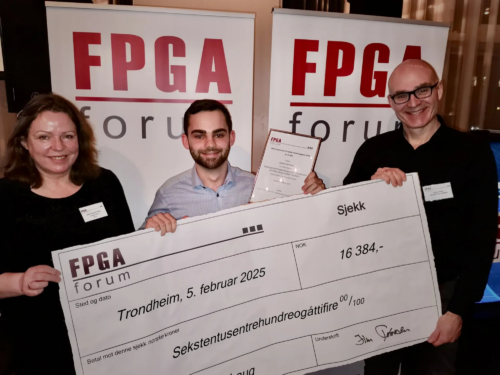Radionor Communications develops and produce the next generation tactical broadband radios based on phased array technology.
When you need high data capacity, ultralong range and reliable and jamming resilient communication, the Cordis Array II is the leading technology in the field. The Cordis Array II is based on the most recent developments in highly advanced digital array technology that supersedes conventional radios, like MIMO, in capability. The digital array technology has until now been used for advanced radar technology, but now, Radionor Communications brings this type of advanced beamforming technology into tactical communication systems for military operations. The technology gives a highly directive and extremely thin antenna beam which is key to important features like power concentration for long range robustness, low electromagnetic footprint and robustness against jamming. The capability of the technology makes it ideal for installations on aircraft, UAVs, ships, vehicles and soldiers.
Our technology has been proven to offer unique capabilities for land-, sea-, air-, cyber-domain and other critical functions. The technology provides unmatched range, mesh and stability and is ideal for high-mobility operations.
We are proud to have delivered our technology for operational use by several NATO countries and allies.
Radionor Communications is committed to deliver tactical broadband radios with unmatched capabilities which is reliable even when everything else fails. Our technology has proved to be an exceptionally reliable capability under the most severe conditions.
Best international company
Radionor Communications receives the award for best international company in the middle of Norway in 2023
Radionor Communications has received the award for best international company from Innovation Norway and Trade Association in Trondheim.
"We succeeded in achieving our goals for 2023, and I am very pleased with what the Radionor team has accomplished. The demand for communication solutions that we deliver increased significantly last year. Our world leading communication technology works in crisis and war, which means that NATO countries have increased their focus on our products in the current security situation. We sell next-generation critical communication to authorities for civil and military purposes, and we have implemented contingency measures to be able to meet increased demand also in 2024, says Søderholm."
Kåret til Midt-Norges beste internasjonale bedrift - mn24.no

Vigdis Stoum, Raymond Søderhom and Hanne Sjøvold Hansen are receiving the award for Radionor. Foto: Næringsforeningen i Trondheimsregionen
Growth winner of the year 2024
Radionor Communications receives the award for company with highest growth in 2023 in the Trondheim Region
Radionor Communications has received the award Growth winner of the year 2024 from Azets Consulting that presents Tekanalysen.
This is an annual analysis of developments in the technology environment in the Trondheim region. The analysis covers key figures, turnover per sector, value creation and number of full-time employees. The report shows a complete overview of all existing businesses, start-ups, key players and historical acquisitions.

Raymond Søderhom during the Radionor presentation. Foto: Azets
Award for best FPGA-related Master's Thesis 2024
Our employee, Daniel Vorhaug won the award for best FPGA-related Master's Thesis 2024 during the annual FPGA Forum.
The prize was given for his work on creating a novel compression solution for hyperspectral images on FPGA using CCSDS 123.0-B-2.
This is a standard for lossless and near-lossless compression of multispectral and hyperspectral images. Since hyperspectral images consist of hundreds of spectral channels in addition to the spatial information, data must be compressed effectively (for size, and during a short time!) before downlinking. This saves both energy and time.
Daniel's solution was tested in space on our HYPSO-1 satellite, also showcasing our capability of rapidly deploying new code and FPGA-implementations on orbit.
A useful tip from Daniel for future FPGA developers and students (translated from the article): "Spend a lot of time on verification! It may seem time-consuming at first, but it pays off later, and it becomes easier and less time-consuming to correct errors".
Ref. NTNU SmallSat Lab

Daniel Vorhaug together with Heidi Skaar Johannessen, Norxe, and Johan Alme, UiB. Foto: Elektronikk/Einar Karlsen